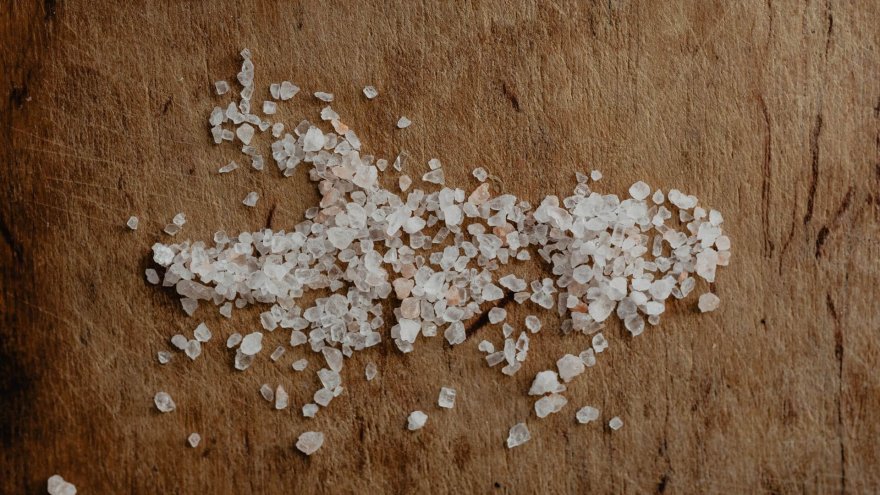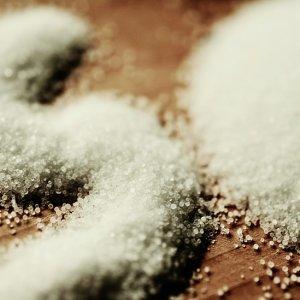Salt and Running: should you be concerned?

Today’s mainstream media has given salt and sodium a pretty bad rap. Heart disease, heart failure, high blood pressure, and other troublesome and potentially fatal health issues stem from consuming too much sodium on a daily basis. And in the Western world, we tend to eat a LOT of salt. Not only do processed foods and restaurants cook with a lot of salt to provide intense flavor and preserve the shelf life of foods, but we then tend to add even MORE salt atop our entrees, whether by habit or preference. We get accustomed to the highly salty taste and then we think we need to add even more. And for most folks who work out minimally (or not at all) and who do not lose sodium through sweating, the salt overload really might be a cause for concern. But for runners, our bodies desperately need the sodium to help us power through our workouts. Even sports drinks like Gatorade and Powerade are typically fortified with electrolytes to make sure our sodium levels stay balanced during times of peak activity. Should you be concerned? Is it time for you to start meticulously tracking your salt intake?
How Much Salt Do You Actually Need?
For those of us who have ever run in conditions that produced some seriously sweaty situations, you probably have seen the salty sweat marks left behind on dark colored clothes, or felt salt beads left behind on your skin once the sweat evaporated. You might have felt yourself in desperate need of a thirst-quenching drink and felt yourself craving salty snacks like chips and nuts. Here lies the hard evidence that salt and sodium levels in the body plummet after a tough, sweaty workout. And it is why endurance athletes for many years were advised to eat salty foods before endurance race events, and event pack along salt tabs for the really long events. But just how much salt are you losing when you work out. Well, it depends on you, your body, and how much you sweat.

Most folks tend to sweat out around 1500-2000 mg of salt during an hour-long workout, though super sweaters may be losing as much as 3000 mg of salt. On the flip side of that though, if you just are not naturally inclined to sweat, you will lose a lot less – this is why it is good to know your body, how much sweat exercise typically makes you produce, and to move forward with proper fueling, hydration, and nutrition. The recommended daily allowance for sodium consumption for adults is 2300. So one decently sweaty workout and you have already negated all of your sodium needs for the day! And if you continue to workout past that hour mark without replenishing your sodium stores, then you run the risk of cramping and even more extreme and serious issues that could lead to death (not to be dramatic or anything…). The irony is that, once you start losing salt through sweat, your thirst starts to drop so you may not think about reaching for an electrolyte-packed drink. Make sure you are mindful and force yourself to consume a drink or snack that is at least 200 mg of sodium per serving. The bottom line is to listen to your body and your cravings. If you can’t stop thinking about salty foods, then go ahead and indulge!

What Foods to Reach For
Okay, so you know you need to be more aware of making sure you are replacing sodium that gets lost through sweat (as well as mindful of not consuming too much salt to maintain health). And as a runner, you are also likely very conscientious of the foods you put into your body, and how they impact your athletic performance. Runners need carbs, there’s no doubt about that. So fueling yourself with whole grain sources of carbohydrates that are filling, healthy, AND salty is a win-win all around! Try whole-grain bread for your lunch sandwiches, pretzels, and crackers for snacking, and pasta noodles for your pre-race dinner. Packaged deli meats and cheeses also often contain high salt levels, as does canned soups and broths (which is part of the reason why these are served at aid stations along ultra-endurance racing events). Most foods that come in a can, jar, or in some other heavily sealed package likely have higher sodium levels than fresher counterparts – which makes it that much easier to throw into a gym bag if you’re on the go. If you are trying to figure out what foods to eat right before a race that have salt, but you’re also superstitious about changing up your typical routine, don’t be afraid to throw a little table salt onto your hard boiled eggs, bagels, and even the banana slathered in peanut butter (don’t knock it ‘til you try it!)

A Note on Salt Tablets
You’ve probably seen or heard of ultra athletes (especially triathletes) popping salt tablets during their athletic events. Should you follow suit? For the majority of us racers, you probably aren’t going to lose enough salt to warrant a salt tablet in your standard half marathon race. It’s the longer races, starting with the marathon distance, that might actually require that amount of salt. Once you know what kind and level of sweater you are, you can take a look at your training and fueling strategy for race day to decide if you need a salt stick. If the foods that your stomach can safely handle don’t contain enough milligrams of salt per serving to replenish what you think your body is losing each hour, salt tablets might need to be included in your race-day pack.
Sources
- , Pass the Salt?, Runners World Article
- , A Beginners Guide to Salt Tablets for Runners. Are They Dangerous or Are They Your Secret Weapon?, TriathlonHacks Article
Latest Articles
 Is Running on a Treadmill Easier Than Running Outside?Runners have their own preferences, whether it is treadmill running, running outside on the road, or exploring trails. So...
Is Running on a Treadmill Easier Than Running Outside?Runners have their own preferences, whether it is treadmill running, running outside on the road, or exploring trails. So... Is It OK to Use Trail Running Shoes on the Road?While trail running shoes can be used on roads, especially in situations where a runner encounters mixed terrains or pref...
Is It OK to Use Trail Running Shoes on the Road?While trail running shoes can be used on roads, especially in situations where a runner encounters mixed terrains or pref... How to Fix Sore Quads After Running?Rest, ice, gentle stretching, and over-the-counter pain relievers can help soothe sore quads after running. Also, ensure ...
How to Fix Sore Quads After Running?Rest, ice, gentle stretching, and over-the-counter pain relievers can help soothe sore quads after running. Also, ensure ... 10 Fruits With The Most Electrolytes to Replace Sports DrinksThese fruits are high in electrolytes such as potassium, magnesium, and calcium, essential for hydration, muscle function...
10 Fruits With The Most Electrolytes to Replace Sports DrinksThese fruits are high in electrolytes such as potassium, magnesium, and calcium, essential for hydration, muscle function...

